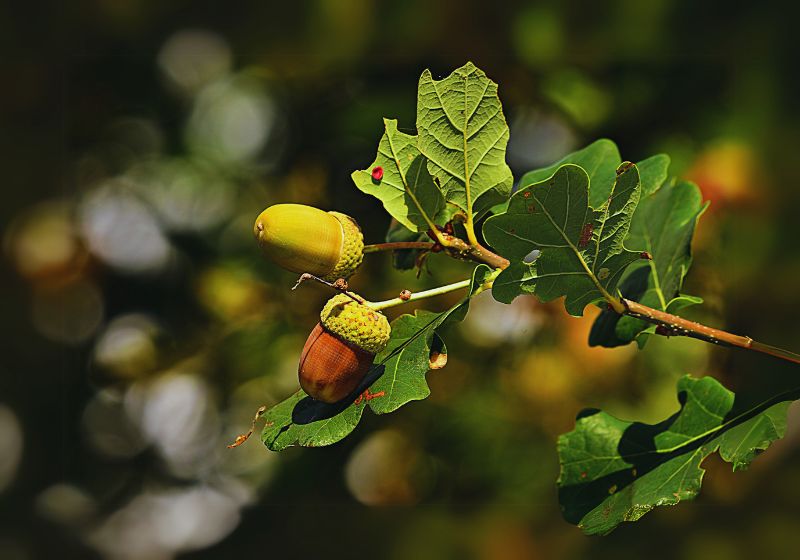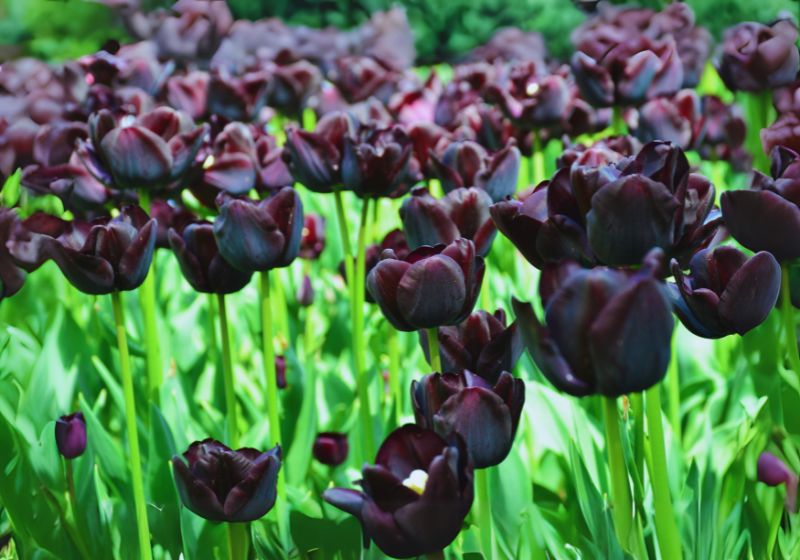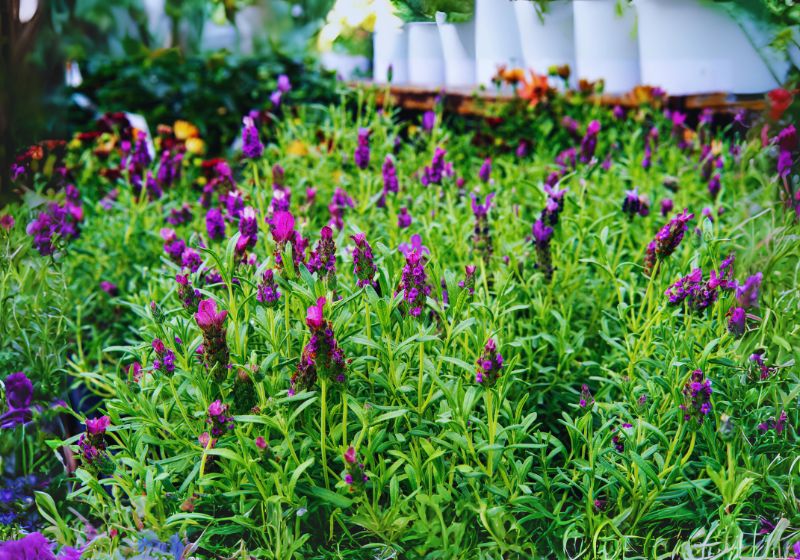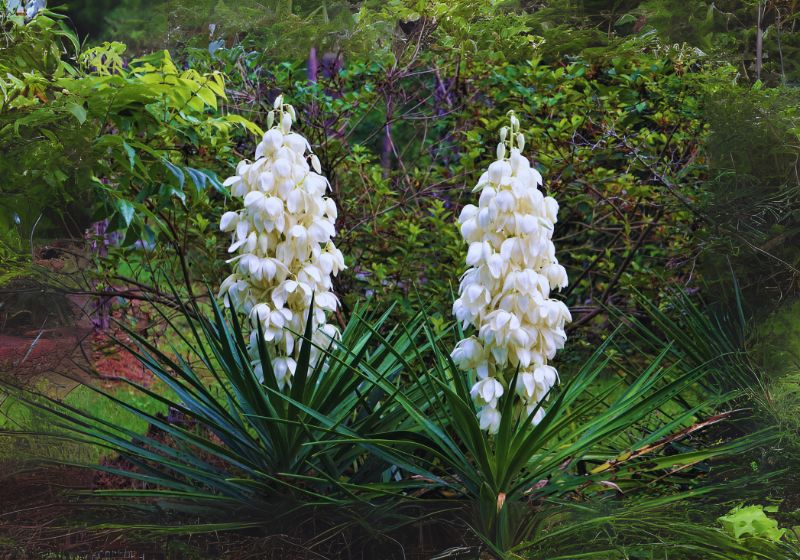Complete Guide to Growing and Caring for Tiger Lily Flowers

Tiger Lily Flowers perennials of Tiger lilies exhibit a distinct appearance with their orange blooms covered by dark spots while bearing similarities to the markings of a tiger. The reliable nature of these flowers together with their basic needs makes tiger lilies an attractive selection for gardeners from beginner to advanced skill levels. You will find all the details needed to grow tiger lilies successfully in this guide that explains proper care techniques.
Characteristics of Tiger Lilies

- Scientific Name: Lilium lancifolium
- Common Name: Tiger Lily
- Plant Type: Perennial
- Bloom Time: Mid to late summer
- Height: 3 to 5 feet
The blooms of this plant appear as bright orange cups containing dark spots.
- Sun Requirements: Full sun to partial shade
- Hardiness Zones: USDA zones 3-9
Benefits of Growing Tiger Lilies
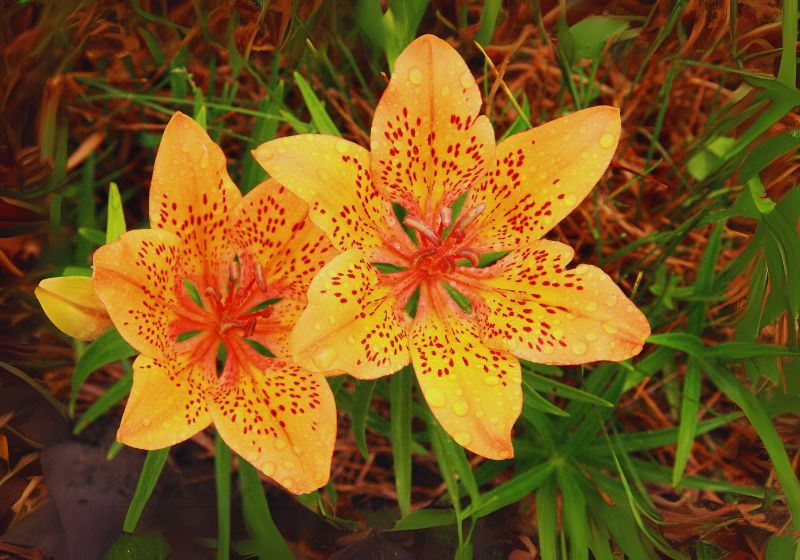
Low maintenance and hardy
- Beautiful and exotic appearance
- Tiger Lilly flowers pull bees along with butterflies toward them because of their color and patterns.
- Resistant to pests and diseases
- Suitable for various garden styles
Planting Tiger Lilies
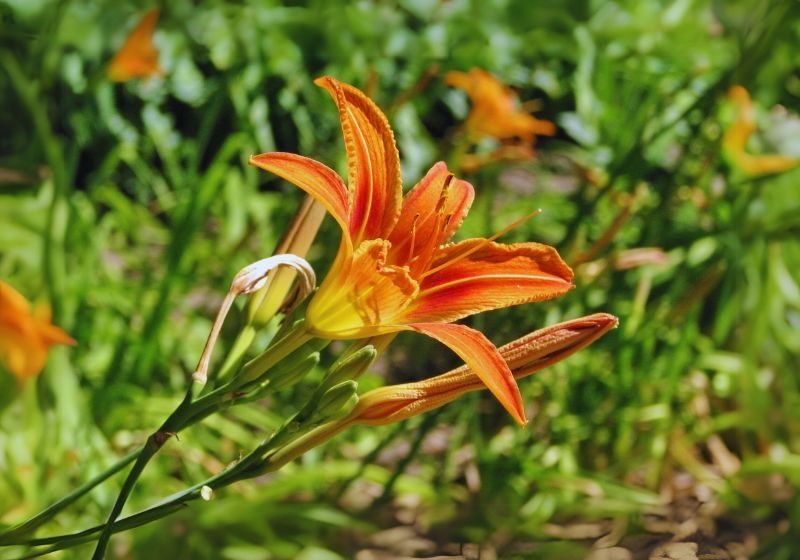
Choosing the Right Location
- Tiger lilies will grow successfully when planted in locations that present these soil and environmental conditions:
- Well-drained soil
- Full sun or partial shade
- Protection from strong winds
Soil Preparation

- The best soil conditions for growing tiger lilies consist of loamy earth which drains well while containing organic materials.
- pH Level: Slightly acidic to neutral (6.0-6.5)
- Soil Amendments require the addition of compost or organic material for boosting soil fertility.
Planting Tiger Lily Bulbs
- When to Plant: Fall or early spring
- Depth: 4-6 inches deep
- Spacing: 8-12 inches apart
- After planting maintain moist soil conditions that should not exceed water saturation point
Tiger Lily Flowers carrying

Watering Requirements

- Water deeply once a week
- Waterlogging should be avoided to stop rot from affecting the bulbs.
Fertilizing Tiger Lilies

- Apply a balanced slow-release fertilizer across the soil during the first part of spring.
- The application of compost combined with organic mulching helps sustain soil nutritional level.
Mulching

- Organize the base with a 2-inch layer of mulching material
- The application of 2 inches of mulch creates moisture retention and prevents weed growth.
Staking and Support

- The height of certain plants can demand stake installation to avoid plant bending.
- Home gardeners should use garden stakes or supports to maintain the vertical position of stems.
Pruning and Deadheading
Deadheading

- Deadheading spent flowers will lead to an extended blooming cycle.
- Seeds will not receive any of the plant’s energy due to this process.
Pruning After Blooming

- Trim the foliage when it develops yellow coloration during fall months
- It is important to maintain all green plant leaves because they enable energy storage to be used during the next growing season.
Propagation Methods
Propagation by Bulb Division

- Dig up bulbs every 3-4 years
- Quickly replant the broken parts after separation.
Growing from Bulbils
- Small bulbils develop as dark-colored bulbs that grow from leaf nodes.
- Bulbils should be collected from the plant to grow in pots or garden beds.
- The plants require two to three years until they bloom as flowering specimens.
Common Pests and Diseases
Pests
- The aphid pest can be dealt with using neem oil or insecticidal soap.
- People should either manually remove Lily Beetles or apply organic pest control methods to control these pests.
Tiger Lilies Diseases
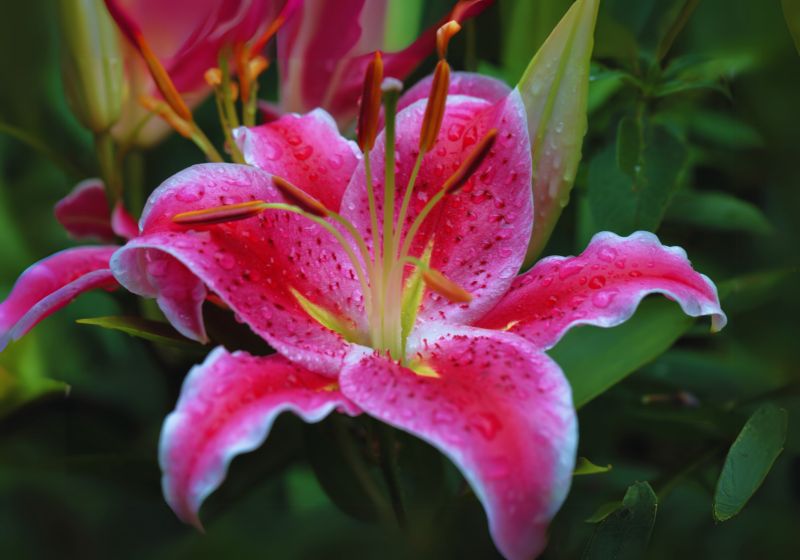
- After rainfall and dew clean up leaves then improve ventilation between plants to prevent Botrytis Blight infection.
- Natural bulb rot can be prevented by providing appropriate drainage alongside minimizing excess water.
Overwintering Tiger Lilies
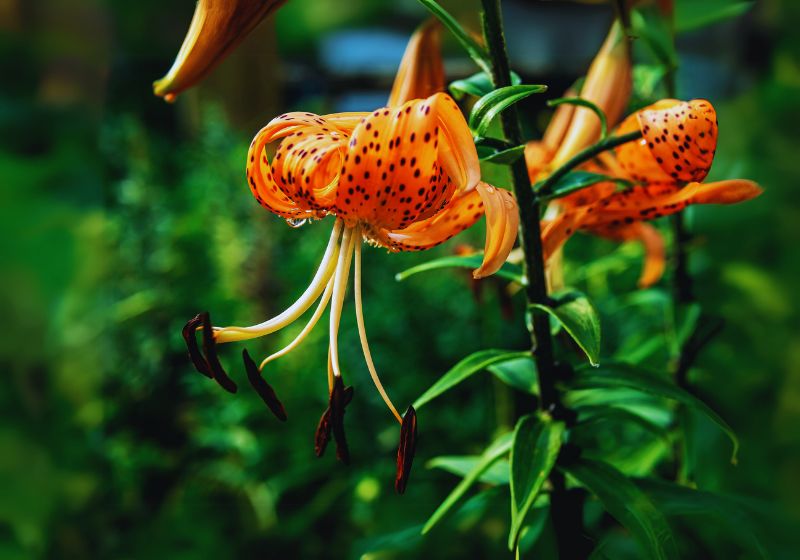
- Dead foliage of Tiger Lilies should be cut back during the late fall season.
- A thick layer of mulch should cover bulbs during harsh cold seasons to provide protection.
- Plant owners in locations where temperatures fall to harsh levels should move their bulbs out from the ground for storage before spring begins.
Companion Planting for Tiger Lilies
Best Companion Plants

- Coneflowers (Echinacea)
- Black-eyed Susan’s (Rudbeckia)
- Daylilies
- Hosta’s
- Salvia
Plants to Avoid

- Plants of different lily types should be kept separate for avoiding diseases to spread
- Ground covers with vigorous growth should not grow near your plant since they battle for nutrients
Growing Tiger Lilies in Containers
Choosing the Right Container

- A pot with proper drainage holes should be selected
- Minimum depth of 12 inches
Care for Potted Tiger Lilies
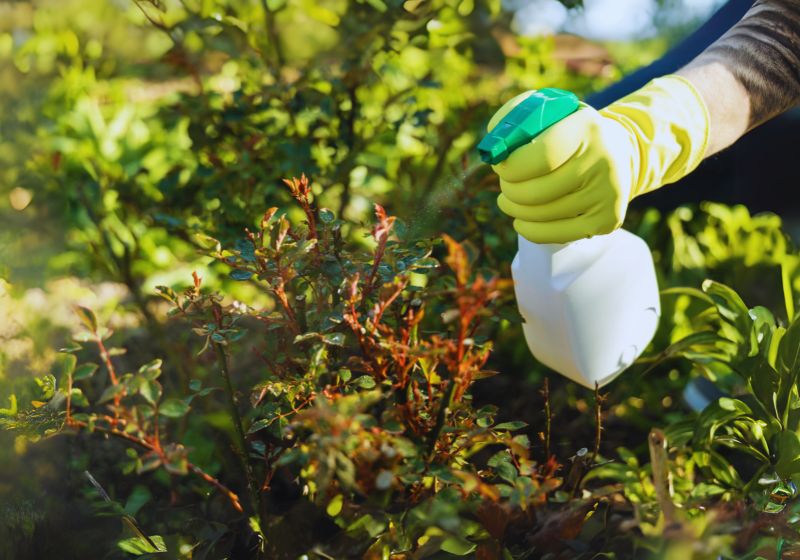
- Give periodic water to your plants while letting the soil surface become somewhat dry during this interval
- Apply fertilizer treatment every three to four weeks while the growing season continues.
Benefits of Growing Tiger Lilies
Aesthetic Appeal

The garden receives enhanced beauty from the combination of tiger lilies which display their orange petals with distinctive black freckles. Bright garden areas become visually pleasing because these flowers work well as focal elements.
- The reliable nature of these flowers together with their basic needs makes tiger lilies an attractive selection for gardeners from beginner to advanced skill levels.
- You will find all the details needed to grow tiger lilies successfully in this guide that explains proper care techniques.
Easy to Grow & Low Maintenance

These perennial plants show high tolerance to diverse conditions since they need minimal maintenance to thrive throughout many conditions. Neglected established tiger lilies need minimal care.
Drought Tolerance

Tiger lilies exhibit tolerance towards moderate droughts because of which they become suitable for gardens situated in regions that experience periodic dry spells.
Attracts Pollinators

The Tiger Lily Flowers of these plants draw in bees butterflies as well as hummingbirds which helps both biodiversity and pollination in the garden ecosystem.
Deer and Pest Resistance

Tiger Lily Flowers exhibit built-in protection against deer and rabbits and various pests which makes them a strong garden pick when living with wild animals.
Perennial Beauty

The yearly appearance of Tiger Lily Flowers means continuous garden beauty because they maintain their presence through natural growth without requiring any annual replanting.
Potential Medicinal Uses

Traditional herbal medicine makes use of selected components of the tiger lily plant because they demonstrate agency in reducing inflammation and offering relief to bodily tissues.
How to Grow Tiger Lilies
Choosing the Right Location

- Identify a position where sunlight can reach directly except for a few hours of shade.
- Adequate drainage in the soil will help protect roots from rot.
- You can successfully grow tiger lilies in garden beds and borders as well as containers.
Soil Preparation

- Tiger Lily Flowers thrive best in soils with a pH between 6.0 and 7.0 which must be acidic yet neutral.
- You should mix organic compost together with well-rotted manure to enhance your soil condition.
Planting Tiger Lily Bulbs

- Bulbs need planting during the early period of spring or during fall months prior to freezing snow.
- Plant the bulb in a hole that reaches 6 to 8 inches deep while positioning the pointed section toward the sky.
- The base distance between space bulbs should measure 8–12 inches for adequate air circulation.
- Soil and water should be applied thoroughly to the surface.
Watering Needs
- Soil moisture should remain consistent at even levels that do not become waterlogged.
- Water about once a week during dry periods.
- Overhead watering should be avoided since it promotes fungal infections.
Fertilizing
- Use a balanced fertilizer with 10-10-10 composition that you should apply early during the spring season.
- Plants require either slow-release fertilizers alongside organic compost as part of their healthy growth plan.
Mulching
- A layer of mulch should be applied around the base to measure at least 2–3 inches high for moisture retention and weed control purposes.
- Place mulch away from the stems to stop rot development.
Caring for Tiger Lilies
Staking and Support
- Plants exceeding three feet should get staked for Tiger Lily Flowers protection against bending.
- To provide additional support use garden stakes together with cages.
Deadheading & Pruning
- Deadheading spent Tiger Lily Flowers leads to new blooming cycles so you should perform this task regularly.
- Towards the end of fall carefully cut away yellowed foliage to organize the plant.
Dividing Bulbs
- Tiger Lily Flowers reproduce themselves naturally by developing bulbs at ground level.
- The separation of overcrowded bulbs should take place every 3–4 years through bulb digging.
Pest & Disease Control
- The plant occasionally faces attacks from aphids and red lily beetles therefore apply insecticidal soap for protection.
- Fungal diseases can be prevented by maintaining proper ventilation together with controlling damp conditions.
Overwintering Tiger Lilies
- Bulbs in cold regions should receive a Tiger Lily Flowers protective layer of mulch for winter protection from freezing.
- Mild climate conditions permit tiger lily bulbs to remain in the ground unprotected.
Companion Plants for Tiger Lilies

The plant species Tiger Lily Flowers Echinacea also known as Coneflowers offers both distinct visual shades and draws necessary pollinators to your garden.
- Hosta’s : Complement the tall, upright growth with lush foliage.
- Black-eyed : Susan should be integrated into garden beds to introduce warm yellow colors.
- Russian Sage :Provides a beautiful purple contrast to tiger lilies.
Conclusion
Tiger Lily Flowers are a stunning and resilient addition to any garden. With minimal care, they will reward you with vibrant blooms year after year. By following this guide, you can successfully plant, grow, and maintain these gorgeous flowers while ensuring they remain healthy and beautiful.
READ MORE: How to Grow a Crabapple Tree A Comprehensive Guide


 English
English 
























